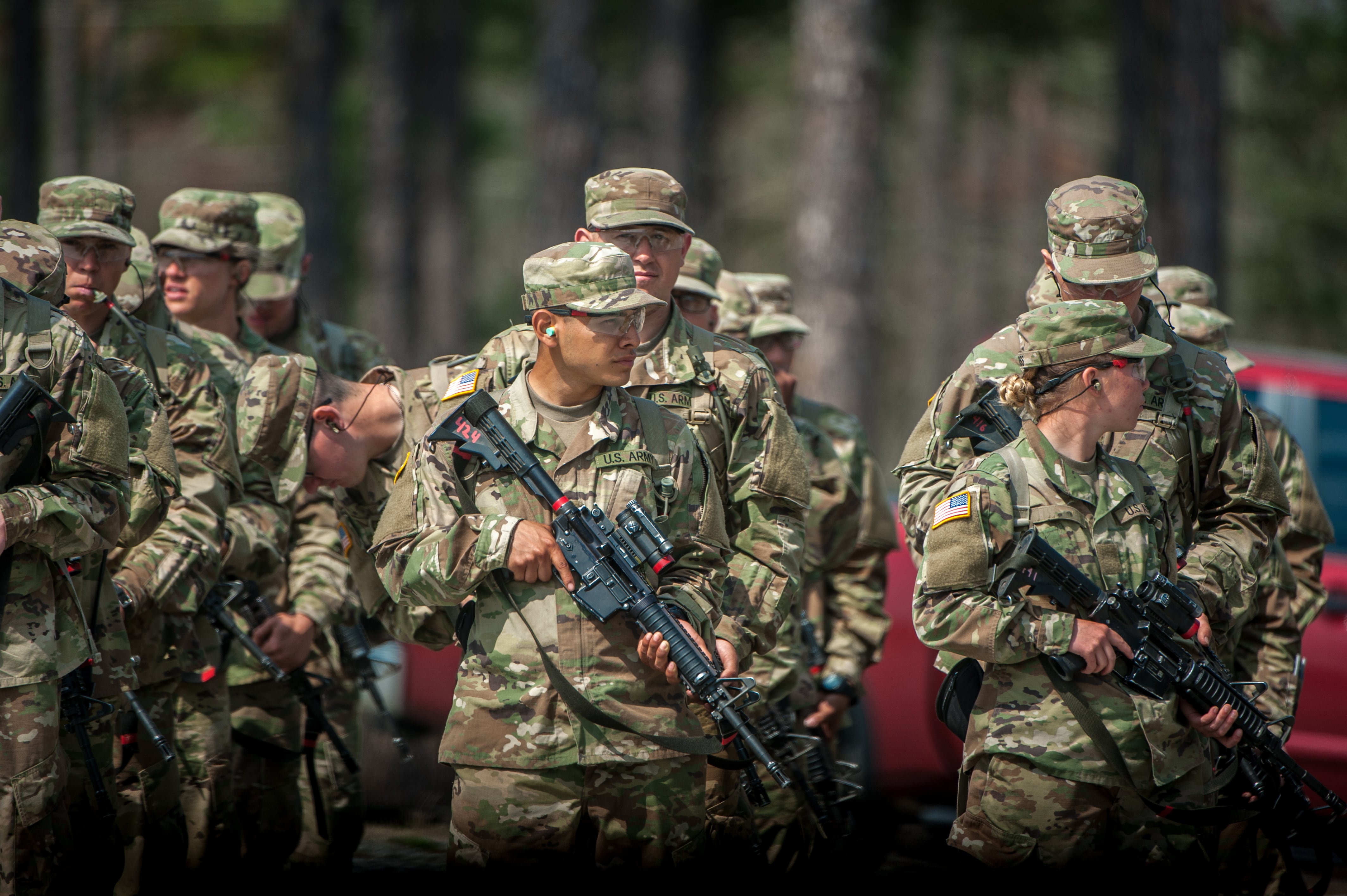The U.S. unemployment rate rose above 14 percent in April, the highest since the Great Depression. And though economic downturns typically boost Army recruitment numbers, the service hasn’t seen a major uptick yet.
Out-of-work civilians or recent graduates unable to find jobs often start turning to military service in greater numbers when the unemployment rate crests 6 percent. And though that hasn’t started yet, it’s still early, the commander of Army recruiting said in a telephone interview Wednesday.
“I don’t know if we’ve seen the upturn yet of what we’d normally get above 6 percent," said Maj. Gen. Frank M. Muth. "What I would tell you is, I think we’ll ... have an indication by mid-July, beginning of August if things really start to change.”
By March, the Army already signed up about 2,200 more recruits than it had by the same time last year, officials at Army Recruiting Command said. But the coronavirus pandemic started to dampen recruiting efforts as brick-and-mortar shops shuttered and soldiers adjusted to pitching the service to young people online.
But Muth was proud of how quickly his soldiers adjusted to virtual recruiting, crediting efforts to bulk up their online presence that date back to 2018.
“Had we not been in a position to virtually recruit: One, we would have risked the force, and two, we would have done about zero [new contracts]," Muth said.
Right now, the service is about 4,000 contracts short of where it wants be with new recruits. Army Recruiting Command is still waiting on a target number from service leadership to tell them how many new soldiers are needed for the entire year, but that number is expected to look roughly similar to last year — somewhere around 68,000.
RELATED

The target ebbs and flows because recruitment is only one of the figures that impacts the service’s yearly end-strength. Another major input comes from retaining soldiers already in the force, and this year has been good for that, said E. Casey Wardynski, the Army’s assistant secretary for manpower and reserve affairs.
“We’re on track to hit our end-strength target of 485,000,” said Wardynski. “Retention is very strong this year. It’s about 15 percent higher than we anticipated at the beginning of the year.”
Wardynski credited that retention to short-term reenlistment options that were recently approved for soldiers close to the end of their contracts and which require three- to 11-month contract extensions. He also said that policies targeted at defraying the cost of the Pentagon’s stop-movement order have helped encourage troops to stay in.
A lot is still unknown about how severe the current economic downturn will become. That uncertainty is likely impacting some people who would otherwise join the military if the economy slumps, Muth predicted.
“I think, and this is just Frank Muth’s opinion, the psyche of a person looking at that and potentially making life decisions is: ‘Is this temporary, or is this going to be longterm,’" he said.
If the economy does impact recruiting, early indicators might appear through increased traffic on GoArmy.com, as well job ads placed on Google and the employment-related search engine Indeed.
Recruiters did begin returning to their in-person locations last week, increasing the use of those facilities in places where the pandemic is slowing down. There are caveats at those sites, however. Each recruiting battalion commander had to brief Muth on the measures they were taking to mitigate the spread of infections.
RELATED

“[At] every station, we know the square-footage, we know how many people can be at the station at a time. We blue-taped the entire station to ensure people maintain separation," Muth said. "They have all the cleaning products and they have all the masks. All of that was put into place and briefed to me before we increased utilization.”
But some elements of recruiting and engaging with young people are ultimately better done online.
“Snapchat, kind of dead. Facebook, that’s for older folks. Z-geners don’t really use that," Muth added. "These kids are really only using Instagram right now, and they use TikTok, too, but Instagram is still king and queen.”
The Army’s e-sports team has also started to generate momentum. Last year, the e-sports initiative, which sends Army representatives to video game competitions, brought in about 3,700 recruiting leads for the entire year.
Within the first four months of fiscal year 2020, the e-sports team had netted more than 8,000 leads, and more are coming in. The Syracuse battalion in New York, for instance, recently concluded a virtual “Call of Duty” tournament.
“They just closed it out," Muth said. “They used three recruiters, eight-hours-a-week for three weeks and they got 1,500 leads.”
“To put that in context,” he added, "every year for the last 20 years, the Syracuse battalion oversees the New York State Fair, which happens in their area. And we spend three weeks, 15 hours-a-day with eight recruiters a day and $15,000, and the most leads we ever got was 1,400. That will tell you the power of the e-sports.”
Kyle Rempfer was an editor and reporter who has covered combat operations, criminal cases, foreign military assistance and training accidents. Before entering journalism, Kyle served in U.S. Air Force Special Tactics and deployed in 2014 to Paktika Province, Afghanistan, and Baghdad, Iraq.




